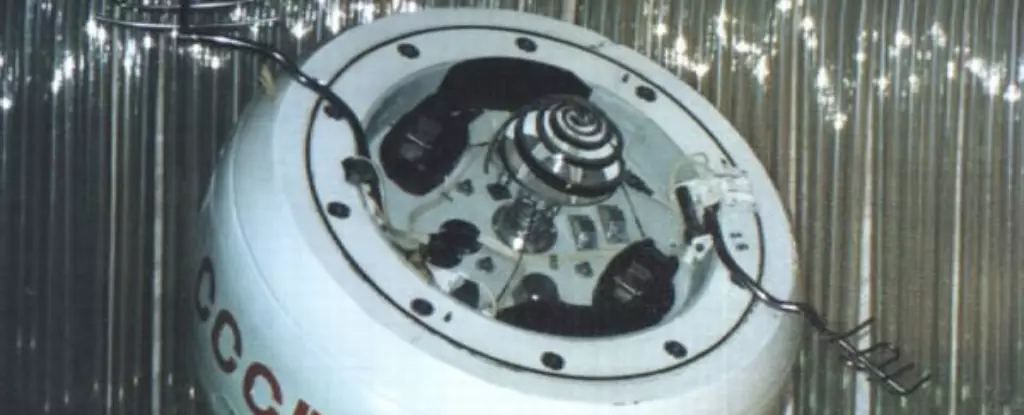As we approach a significant chapter in the history of space exploration, the imminent reentry of Kosmos-482 serves as a poignant reminder of our technological past. This relic of the Cold War era, launched in 1972, is on a course that will soon bring it back to Earth after a remarkable five-decade journey in orbit. The anticipation surrounding this event highlights not only the excitement of witnessing a piece of history but also reflects on how our ambitions in space have evolved over time.
A Brief Look Back at Kosmos-482
Launched on March 31, 1972, from the Baikonur Cosmodrome, the Kosmos-482 satellite was part of the Soviet Union’s extensive space program, which thrived in secrecy. Designed to possibly explore Venus, the mission encountered a critical failure shortly after liftoff, resulting in its unexpected status as an orbital relic rather than a planetary explorer. Such failures were not uncommon during that tense period, and Kosmos-482 represented the darker side of Soviet ambitions in space.
Theoretical notations suggest that a timer malfunction stranded it in Earth’s orbit, leading to its eventual disintegration into smaller pieces shortly after launch. Within just three days, fragments of the spacecraft had already reentered over New Zealand, marking one of the first instances of technology that failed to live up to its promising ambitions. Comparative analysis of Kosmos-482’s failure with later missions, like the ill-fated Phobos-Grunt in 2012, shows a repeated trend among some Soviet spacecraft that grapples with challenges in space technology.
The Impending Reentry: What to Expect
As Kosmos-482 approaches its fiery reentry, experts project a relatively low level of risk for those on the ground. Weighing approximately 500 kilograms (1,100 pounds), it stands in stark contrast to heavier objects that have reentered Earth’s atmosphere, such as the Upper Atmosphere Research Satellite, which was nearly twelve times its mass. The predictions for its reentry trajectory remain somewhat vague, covering a broad swath of the Earth’s surface from 52 degrees north to 52 degrees south latitude. This wide margin exemplifies the uncertainties continually associated with orbital reentries.
Satellite observers and analysts like Marco Langbroek have expressed intriguing hypotheses regarding the potential of Kosmos-482. Since it was designed to endure the harsh atmospheric conditions of Venus upon reentry, there exists a captivating possibility that remnants of the craft may survive reentry into Earth’s atmosphere intact. However, the object’s age and the complexity of atmospheric dynamics render such predictions uncertain.
The Broader Context: Space Junk and the Growing Challenge
The reentry of Kosmos-482 occurs against the backdrop of an increasingly congested low Earth orbit, where space debris and satellite proliferation raise difficulties for space exploration and safety. In addition to legendary remnants from the Space Race, modern megaconstellations like SpaceX’s Starlink and Amazon’s Project Kuiper are saturating the skies with thousands of satellites. This burgeoning competition for successful satellite deployment intensifies the already critical issue of space debris management.
Looking ahead to 2025, the situation is projected to worsen significantly; with more commercial enterprises launching their own satellite networks, the issue of space junk could pose unprecedented challenges for future missions. It raises critical questions about the sustainability of space activities and the long-term impacts that these launches might impart on our orbital ecosystem. Without proactive measures, the dream of exploring beyond our planet may yield to a chaotic environment where operational satellites and space traffic collisions become commonplace.
A Moment to Reflect and Appreciate
As we gear up to witness the demise of Kosmos-482, there’s a bittersweet sense of nostalgia that accompanies it. The decommissioning of this once-ambitious mission not only signifies a closing chapter of obsolete technology but also provides an opportunity to appreciate how far we have come in our quest to navigate the cosmos. Kosmos-482 represents a time when the stakes were high, and the space race was in full swing—a symbol of human endeavor and a reminder of both our triumphs and failures.
In paying homage to Kosmos-482, we should also contemplate our collective future in space exploration. Will we continue to learn from the past? Or will the rush for commercial conquest in outer space further exacerbate the issues that we now face? The reentry of this storied satellite not only embodies technological history but also invites an urgent dialogue about the sustainable and responsible direction of our future explorations beyond Earth.


Leave a Reply